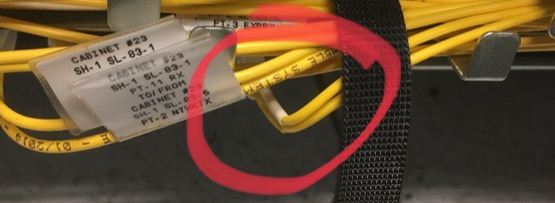I've accumulated 5 of the SolarFlare SFN6122F NICs at a net cost $21.90 each. Gotta love fleaBay! I've installed them in two of my ESXi 6.x servers, where they work fine (as you noted above).
Curious about how well they'd work with FreeNAS running on-the-metal, this afternoon I installed FreeNAS 11.2-U8 onto a flash drive in my somewhat elderly X8SIE-based system ('BACON'). I can report that they work right out-of-the-box with no intercessions or hand-waving necessary.
Code:
root@bacon:~ # ifconfig -vm sfxge0
sfxge0: flags=8843<UP,BROADCAST,RUNNING,SIMPLEX,MULTICAST> metric 0 mtu 9000
description: connected to 9 peers
options=ec07ab<RXCSUM,TXCSUM,VLAN_MTU,JUMBO_MTU,VLAN_HWCSUM,TSO4,TSO6,LRO,VLAN_HWTSO,LINKSTATE,RXCSUM_IPV6,TXCSUM_IPV6>
capabilities=ec07ab<RXCSUM,TXCSUM,VLAN_MTU,JUMBO_MTU,VLAN_HWCSUM,TSO4,TSO6,LRO,VLAN_HWTSO,LINKSTATE,RXCSUM_IPV6,TXCSUM_IPV6>
ether 00:0f:53:0c:05:b0
hwaddr 00:0f:53:0c:05:b0
inet 172.16.10.12 netmask 0xffffff00 broadcast 172.16.10.255
nd6 options=9<PERFORMNUD,IFDISABLED>
media: Ethernet 10Gbase-SR <full-duplex,rxpause,txpause>
status: active
supported media:
media 10Gbase-SR mediaopt full-duplex,rxpause,txpause
media 10Gbase-SR mediaopt full-duplex,rxpause
media 10Gbase-SR mediaopt full-duplex
media 1000baseSX mediaopt full-duplex,rxpause,txpause
media 1000baseSX mediaopt full-duplex,rxpause
media 1000baseSX mediaopt full-duplex
plugged: SFP/SFP+/SFP28 1X Copper Passive (Copper pigtail)
vendor: Arista Networks PN: CAB-Q-S-2M SN: XHC1314LG06P DATE: 2013-04-02
root@bacon:~ # ifconfig -vm sfxge1
sfxge1: flags=8843<UP,BROADCAST,RUNNING,SIMPLEX,MULTICAST> metric 0 mtu 9000
description: connected to brocade-6610-u1
options=ec07ab<RXCSUM,TXCSUM,VLAN_MTU,JUMBO_MTU,VLAN_HWCSUM,TSO4,TSO6,LRO,VLAN_HWTSO,LINKSTATE,RXCSUM_IPV6,TXCSUM_IPV6>
capabilities=ec07ab<RXCSUM,TXCSUM,VLAN_MTU,JUMBO_MTU,VLAN_HWCSUM,TSO4,TSO6,LRO,VLAN_HWTSO,LINKSTATE,RXCSUM_IPV6,TXCSUM_IPV6>
ether 00:0f:53:0c:05:b1
hwaddr 00:0f:53:0c:05:b1
inet 10.0.58.12 netmask 0xffffff00 broadcast 10.0.58.255
nd6 options=9<PERFORMNUD,IFDISABLED>
media: Ethernet 10Gbase-SR <full-duplex,rxpause,txpause>
status: active
supported media:
media 10Gbase-SR mediaopt full-duplex,rxpause,txpause
media 10Gbase-SR mediaopt full-duplex,rxpause
media 10Gbase-SR mediaopt full-duplex
media 1000baseSX mediaopt full-duplex,rxpause,txpause
media 1000baseSX mediaopt full-duplex,rxpause
media 1000baseSX mediaopt full-duplex
plugged: SFP/SFP+/SFP28 1X Copper Passive (Copper pigtail)
vendor: Arista Networks PN: CAB-Q-S-2M SN: XPV131830184 DATE: 2013-05-03
root@bacon:~ #



